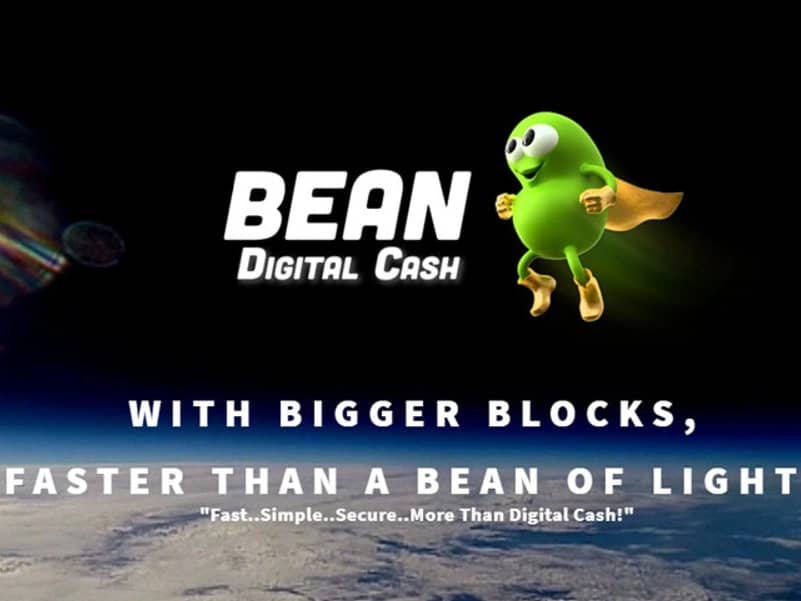위키 구독하기
Share wiki
Bookmark
Bean Cash
Bean Cash
**Bean Cash (BITB)**는 이전에는 Bitbean으로 알려진 완전 분산형 피어투피어 시스템입니다. 거의 완벽한 그래프 네트워크이며, 은행과 달리 단일 장애 지점이나 중앙 권한이 없습니다. Bean Cash는 오래된 암호화폐 중 하나이며, 세계에서 가장 '친환경적인' 디지털 통화가 되는 것을 목표로 합니다.
이 코인은 2015년에 출시되었으며, 법정 화폐와의 유사성 때문에 열렬한 커뮤니티의 환영을 받았습니다.[1][2]
개요
Bean Cash는 이전에 "BitBean"으로 알려진 디지털 통화 및 네트워크의 새로운 브랜드입니다. 2018년에 한 사설 회사(이전에 "BitBean"으로 알려진 암호화폐와는 무관)가 미국 상표권을 이용하여 "BitBean" 이름을 독점하려고 시도했습니다. 이에 선제적으로 대응하여 2017년 말 Bean Core는 불필요한 분쟁을 피하기 위해 Bean Cash로 브랜드를 변경하기로 결정했습니다.
Bean Cash는 Gavin Andersen의 비트코인 확장성 한계 해결 제안을 기반으로 최대 20MB 블록 크기를 구현한 최초의 '암호화폐'였습니다. BitBean은 또한 Proof of Bean (PoB) 시스템에서 정적 블록 보상을 최초로 도입한 "암호화폐"였습니다. 이제 에너지를 낭비하는 PoW(Proof of Work) 시스템은 비효율적이고 비용이 많이 들며 구식이 되었습니다.
Bean Cash는 BitBean의 성숙한 블록체인과 안정적인 네트워크를 계승하여 오늘날 시장에서 가장 친환경적인 디지털 통화 중 하나가 되었습니다. 다른 블록체인들이 하드 포크, 거래 롤백, 프로토콜 변경(비트코인 SegWit)을 계속하는 동안 Bean Cash는 하드 포크나 거래 롤백을 한 적이 없습니다. Bean Cash는 ICO, 사전 채굴 또는 스왑이 없었습니다. 블록체인 무결성은 Bean Cash의 특징 중 하나입니다.[5][6]
Bean Cash는 암호화 기술을 기반으로 강력한 암호화 증명 시스템을 사용합니다. 네트워크에서 BEAN을 사용하거나 이동하려면 암호화 증명을 기반으로 하는 키가 필요합니다. Bean Cash는 블록체인에 상당한 컴퓨팅 성능을 내장하고 있습니다. 작업 증명 분산 과정에서 이중 sha256을 사용하여 2.4 페타해시의 피크에 도달했습니다. 오늘날 세계 최고의 슈퍼컴퓨터 중 많은 수를 사용하더라도 6회 확인 후 Bean Cash 네트워크에서 거래를 변경하는 것은 매우 어려운 작업입니다. Bean Cash의 매우 분산형이고 분산된 특성 때문에 블록 재작성이 발생하더라도 네트워크의 다른 부분에서 수용되기 어려울 것입니다.
2018년 Bean Cash는 Bean Cash Core 노드를 통해 네트워크와 리소스를 공유하여 사용자가 추가 BEAN을 얻을 수 있도록 하는 Proof of Resource (POREs)라는 새로운 알고리즘을 출시했습니다. POREs는 v2.X 브랜치에서 알파 수준 소프트웨어 스택으로 구현될 것으로 예상됩니다.[7]
기능
- Proof-of-stake/Proof-of-Bean 알고리즘을 사용하여 6시간 안에 블록을 스테이킹할 수 있습니다. 사용자는 정적 블록당 1,000개의 가상 빈을 보상으로 받았습니다. 따라서 사용자는 거래를 처리할 수 있지만 코인을 축적할 수는 없습니다. 코인은 지갑을 열 때 스테이킹하거나 발행할 수 있습니다.
- Bean Cash는 20초 만에 거래를 검증하고 확인하며 60초 이내에 거래를 처리합니다. 또한 사용자는 센트의 일부에 불과한 매우 적은 금액으로 거래할 수 있습니다.
- Bean Cash 거래는 결제가 처리되면 취소할 수 없으므로 제3자 위험을 방지합니다.
- 낮은 거래 수수료와 스테이킹을 통한 수익 정량화 기능은 Bean Cash를 결제 수단으로 사용하는 상인에게 제공되는 주요 가치 제안입니다.[8]
Bean Cash의 장점
Bean Cash는 블록에서 거래 확인을 거의 실시간으로 가능하게 합니다. 단일 확인은 20초 만에 확인될 수 있습니다. 1분 이내에 Bean Cash는 거래를 거의 실시간으로 검증하고 확인하며 처리합니다. 이는 다른 많은 주요 '암호화폐'가 동일한 기간 내에 수행하지 못하는 것입니다.
Bean Cash를 사용하면 상대방 위험이 없고 차지백이 없습니다. 이는 차지백이 발생하기 쉽고 처리 시간이 길며 수수료가 비싼 신용카드와 비트코인 (비트코인 SegWit 수수료는 거래당 15달러에서 30달러 이상일 수 있음)과 비교하여 시장에 실질적인 가치를 제공합니다. Bean Cash를 사용하면 거래 수수료가 센트의 일부에 불과할 수 있습니다.
Bean Cash는 높은 무결성, 가치 저장 수단, 일상적인 거래를 위한 교환 수단으로 시간의 시험을 견딜 수 있는 지속 가능한 디지털 통화가 되는 것을 목표로 합니다. Bean Cash는 중앙 은행의 통제를 받지 않으며 환율 변동의 영향을 받지 않습니다.
실제로 사용되는 거래 중심의 디지털 통화인 Bean Cash의 주요 목표 중 하나는 디지털 통화 분야의 "마지막 마일" 문제를 해결하는 것입니다. 이 목표를 달성하는 데 중요한 역할을 하는 것은 판매 시점/서비스에서 Bean Cash를 구현하는 회사와 파트너십을 맺고 협력하는 것입니다. Bean Cash는 원래의 비트코인 프로토콜을 기반으로 하며 튜링 완전하고 "스마트 계약"을 처리할 수 있습니다. 이러한 잠재력을 실현하기 위해 Bean Core는 프로토콜에서 휴면 중인 Op-코드를 수정하고 다시 활성화하기 위해 노력할 것입니다. 원래 비트코인의 Op-코드가 복원되고 새로운 Op-코드가 추가되면 상위 수준 언어와 환경을 구축하여 Bean Cash가 더 넓은 개발자 시장과 채택에 도달할 수 있게 될 것입니다.
자금 조달
자금 조달이나 사전 채굴은 없었습니다. 블록체인 (당시 BitBean이라고 함)은 2015년 2월 13일에 출시되었습니다. SHA256 작업 증명 단계 후 Bean Cash는 순수 PoS 통화가 되었습니다. 블록 보상은 1000 Bean과 거래에 포함된 거래 수수료의 합계로 고정됩니다. 이것은 Bean Cash 커뮤니티가 "Proof of Bean"(PoB)이라고 부르는 이 버전의 PoS의 첫 번째 사례였습니다. Bean Cash의 목표 블록 시간은 1분이며 최대 블록 크기는 20MB입니다. 2111년에 최대 공급량 500억 Bean에 도달할 것으로 예상됩니다.[3]
Bean Cash 팀
알려진 팀 구성원은 뉴욕주 올버니의 Tom C.와 뉴햄프셔의 Shawn K.입니다. 다른 팀 구성원은 보안을 유지하기 위해 익명으로 유지되었습니다. 또한 전 세계의 자원봉사자들이 프로젝트에 시간과 자원을 기부하고 있습니다. Team Bean은 Bean Cash 기술에 관심이 있는 모든 사람으로 구성된 더 큰 Bean Cash 커뮤니티입니다. 현재 발행 중인 Bean Cash의 1% 이상을 보유하고 있음을 증명할 수 있는 사람은 Bean Core에 가입하여 Bean Cash 개발 방향에 대한 투표를 할 수 있습니다. 이사회는 현재 발행 중인 Bean Cash의 5% 이상을 보유한 3명의 Bean Core 구성원으로 구성됩니다. 그들은 합의에 따라 통치합니다. 투표가 만장일치가 아니면 통과되지 않습니다. 이사회는 Bean Core에서 나오는 제안을 기각하거나 자체 제안을 제시할 수 있습니다. 마찬가지로 이사회는 Bean Core의 3분의 2 이상의 찬성으로 기각될 수 있습니다.[4]
잘못된 내용이 있나요?
